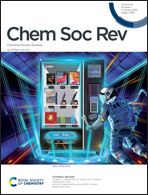Two-dimensional materials in biomedical, biosensing and sensing applications
Abstract
Two-dimensional (2D) materials are at the forefront of materials research. Here we overview their applications beyond graphene, such as transition metal dichalcogenides, monoelemental Xenes (including phosphorene and bismuthene), carbon nitrides, boron nitrides along with transition metal carbides and nitrides (MXenes). We discuss their usage in various biomedical and environmental monitoring applications, from biosensors to therapeutic treatment agents, their toxicity and their utility in chemical sensing. We highlight how a specific chemical, physical and optical property of 2D materials can influence the performance of bio/sensing, improve drug delivery and photo/thermal therapy as well as affect their toxicity. Such properties are determined by crystal phases electrical conductivity, degree of exfoliation, surface functionalization, strong photoluminescence, strong optical absorption in the near-infrared range and high photothermal conversion efficiency. This review conveys the great future of all the families of 2D materials, especially with the expanding 2D materials’ landscape as new materials emerge such as germanene and silicene.



 Please wait while we load your content...
Please wait while we load your content...